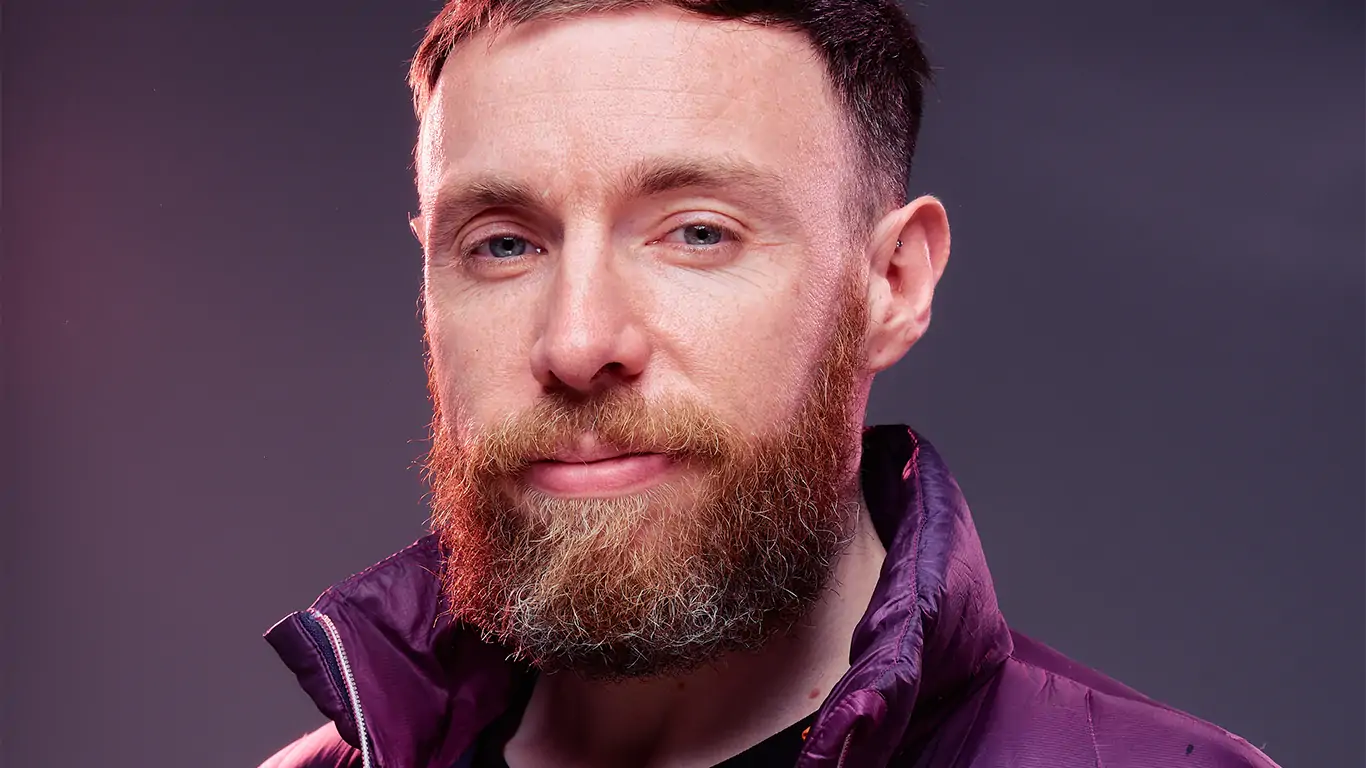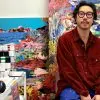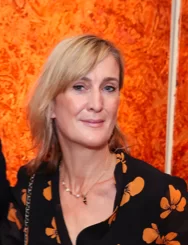David Speed has created a bespoke series of artworks for Nobu Shoreditch to celebrate Nobu’s 30th anniversary. ‘Process’ is David Speed’s artistic interpretation of Chef Nobu’s iconic ‘6 steps of making sushi’, recreated in his signature pink neon palette. The artworks created by multi-media artist Speed are on display on the new Nobu Terrace, and the commission is a perfect artistic partnership between the iconic Chef Nobu and the East London urban artist. ‘Process’ is a tribute to Chef Nobu’s dynamic hands and the meticulous creation of sushi that have made Nobu restaurants world famous.

Image courtesy of the artist
David Speed is a prominent London based aerosol artist known for his signature neon pink artworks, and host of of #1 podcast Creative Rebels. He rose to fame whilst painting the streets during the pandemic, becoming one of the most recognised creators in the UK’s contemporary art scene, and creating artwork for high profile brands and musicians including Shaquille O’Neal, Fortnum & Mason, and MTV.
Nobu Hotel London Shoreditch is at the heart of East London’s creative district and the City’s financial centre, and the hotel and restaurant combine industrial chic with Japanese simplicity. David Speed’s mural can be found on the new Nobu Shoreditch Bar & Terrace.
Lee Sharrock interviewed David Speed for Art Plugged at Nobu Shoreditch and ate in the Nobu Shoreditch restaurant. Thank you to Jorge Figueras Maillarbaux and the team at Nobu Shoreditch for the incredible food and hospitality. Highlights of the menu included the mouth-watering Alaskan Black Cod marinated in Miso sauce with Japanese baby peach, Yellow tail tartare with Caviar, Beef tenderloin on a bed of caramelised onion with Shitake and Enoki mushrooms and the most incredibly fresh sushi selection.
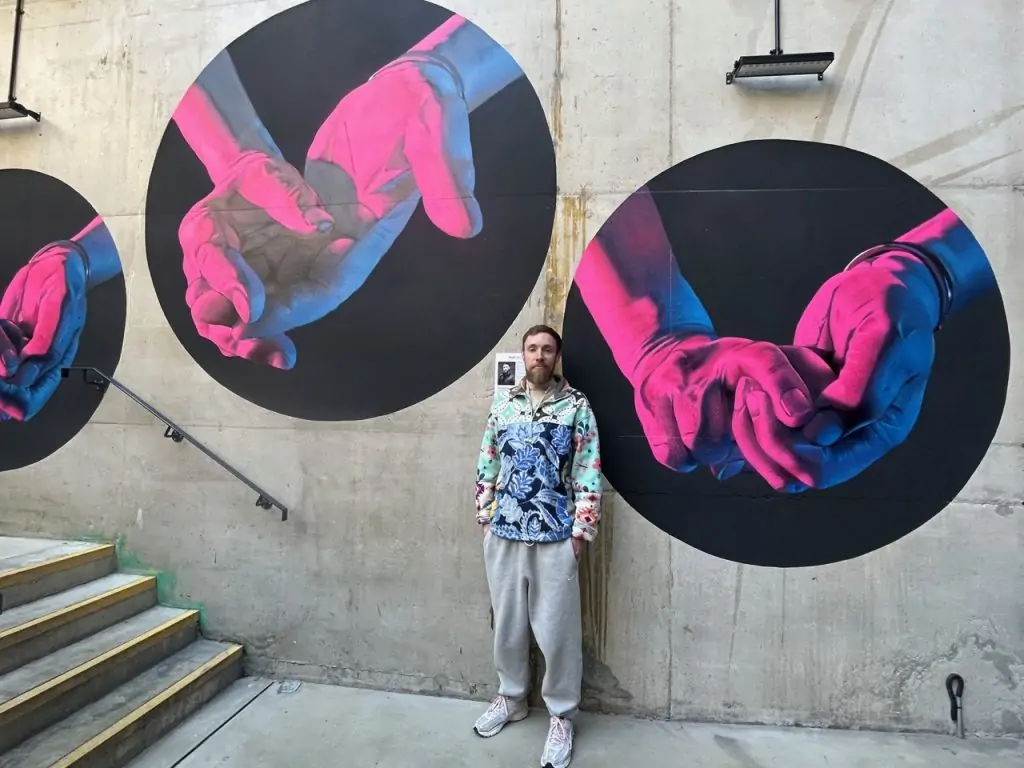
Lee Sharrock: How did the collaboration with Nobu Shoreditch happen – did the curator notice your art in the area?
David Speed: Yes, it’s pretty crazy that just painting in the street would lead me here, but here we are!
There are three main blocks to my career. My first 10 years was spent painting as predominantly an illegal graffiti artist, and not ever being told I was particularly gifted or good at art, as a kid. I got a C for GSCE art. I was never going to be an artist. But I found this graffiti, in the early 2000s it wasn’t very fashionable and was kind of frowned upon. But I just loved it. I had always been told there are people with natural talent, and because I didn’t display any of that, I thought well I’ll never be any good at anything, because I’m not one of the gifted or special people.
The more I was painting, the more I realised ‘hang on’, if you enjoy something and you do it a bunch, as a side effect you get better at that thing. But still from every angle, I was told I would never be an artist. My tutor told me being an artist wasn’t a valid career option, and I should be more realistic.
Then after about 10 years, around 2010, I had a near-death experience when I was painting the underneath of a bridge on the A23 on the way to Gatwick airport, and I stepped backwards to view my work, and my friend grabbed hold of me and saved my life. That was the point I realised I wasn’t invincible. I was taking too many risks doing my art, and people were getting in trouble. So I became a commercial painter. By 2010 the view around Graffiti art started to change quite a lot and there was a real shift. You started to get coffee table books with Banksy, which you’d never had in the past.
Me and a couple of artists started a project called ‘Joy Collective’, where we were painting brightly coloured murals and doing community projects. So for the next 10 years, my career involved painting people’s officers and painting billboards for brands. We worked for Nike, adidas, BMW, eBay…literally anyone you can name we were doing billboards for them. But when you paint for a job, I was getting more lazy with the artwork for myself. So when the Pandemic hit and all my commercial work disappeared, just to keep myself sane I started doing my own stuff again and just having fun.
And that’s been become the third block of my career. I didn’t expect it to, but my work took off online and my life changed as I painted in the streets more and more often.
Lee Sharrock: And that was all in this area? (Shoreditch)
David Speed: Yeah, for the most part.

Lee Sharrock: Are there designated areas in Shoreditch for street art?
David Speed: There are, but they get covered up really quickly. In the Pandemic I was finding there were so many shops that had been boarded up, so I thought, although this is technically not legal, I’m trying to create something beautiful here. And at the end of the day it was a hoarding that was going to be thrown away. I didn’t expect it to become a success or anyone to be blown away by it.
Lee Sharrock: Did people start photographing and posting your murals?
David Speed: Yeah, and through a very local community, people started basing their lockdown walks around my murals, which was lovely. I was getting messages from people saying ‘you’re brightening up our lockdown!’ which kept me going.
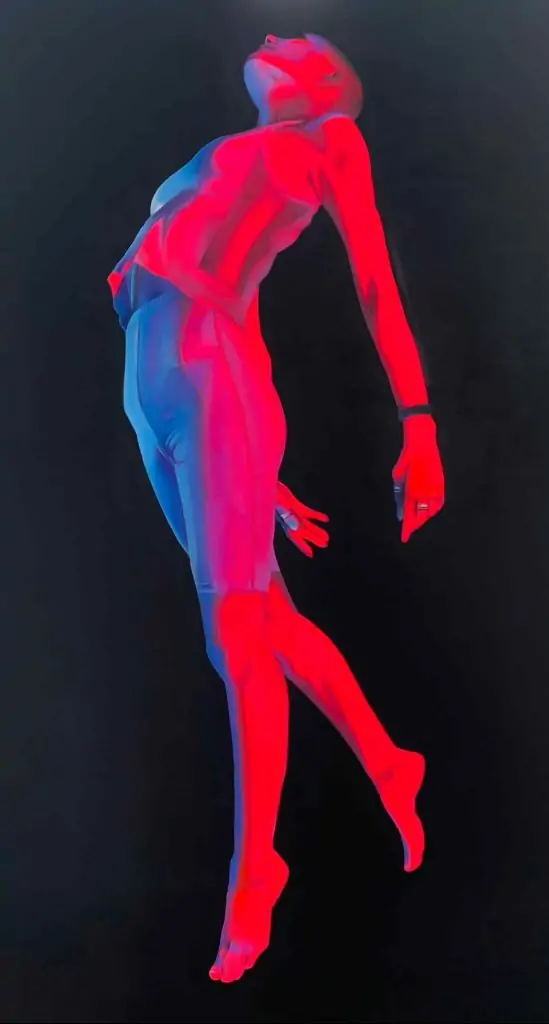
Lee Sharrock : Why did you choose the Neon Pink colour, is it an uplifting colour for you?
David Speed: When I first found neon spray paint, which was only really being used in arts and craft projects at that time, I thought it was so bright and delicious I just fell in love with it! My favourite artist is Caravaggio, which although my work is nothing like his, in a way it kind of is because I’m using the brightest pigments and the darkest darks, and I’m very inspired by Chiaroscuro, which is the effect he used in his work. By finding this really bright pigment, I realised I could create dramatic contrasts with it. The other thing was, a few years ago, I heard an interview with David Choe, he got his break painting the Facebook offices in return for shares, in the early days.
He said he uses black when he paints in the street, because its hard and aggressive, and graffiti art is the art of rebellion. But that’s not my character. I tend to not paint celebrities, I like to celebrate people who deserve celebration rather than people who are already celebrated.
I wanted to make work that’s about love and light, as cheesy as that might sound.
Lee Sharrock: I think we all need a bit of Love and Light right now!
David Speed: Yes, I think so. I suppose on hearing the interview with David Choe & him saying it was a hard and aggressive colour, I thought ‘what’s the opposite of that?’
Graffiti is a ‘Boy’s Club’ and I thought what’s the furthest I can go away from that Bravado, which is more my character, which is softer and about love and kindness. It was quite a scary thing to do really (using the pink), because I thought no one would like it and people would tag over it. But they didn’t. And a few years later I’ve gained hundreds of thousands of followers and I’m working with dream clients, like Nobu!
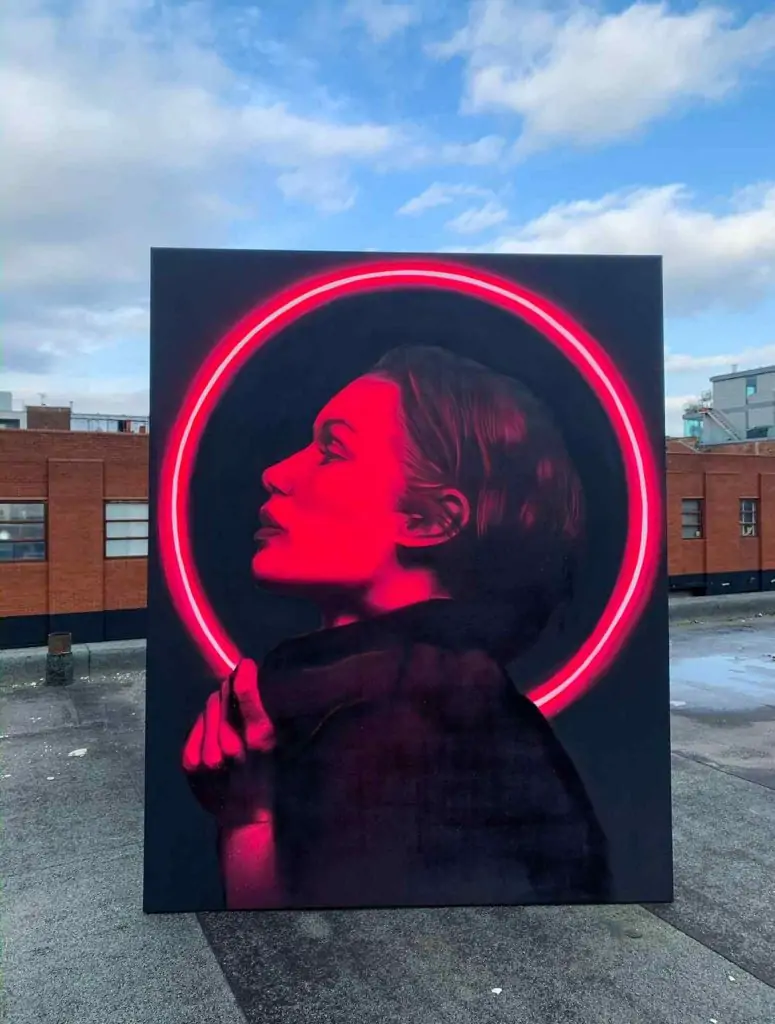
Lee Sharrock: Did you meet Chef Nobu and how did you come up with the idea of painting his hands?
David Speed: I had a meeting at Nobu Shoreditch, one of the team who works there became a fan of my work after seeing it during lockdown. She found my stuff and was following me, and they were having a meeting about what to do with their outside terrace, and she suggested me. We came up with the concept of basing the paintings on Chef Nobu’s 6 six steps for making Nigiri sushi.

About a month later I had a call asking if I was free to go and meet Nobu San in Paris. So of course, I hopped on the Eurostar and went to Paris. I went to the Presidential suite where Nobu San was staying, and I set up a photo shoot with pink and blue lighting and photographed his hands.
Later on me and the team at Nobu Shoreditch went through with some different options of how to paint the hands, and in the end we came up with the idea of six circles in differing sizes.
Lee Sharrock: I can see the Caravaggio reference with the foreshortening, except you’re using neon pink!
David Speed: Yes maybe if Caravaggio had access to neon pink he would have used it too!
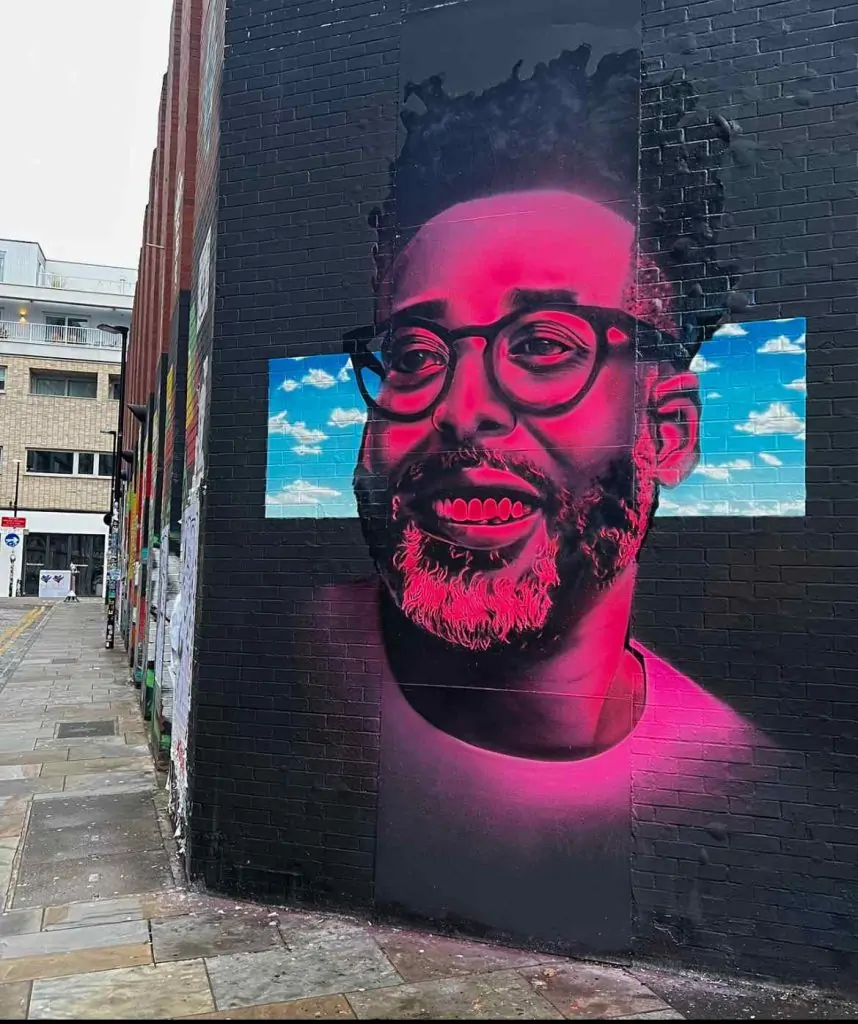
Lee Sharrock: What kind of pigment do you use?
David Speed: It’s UV reactive so at night they turn the terrace lights on and the paintings will glow. It’s a completely different experience at night.
Lee Sharrock: You host a #1 podcast ‘Creative Rebels’ to provide a platform for creativity and mentor young artists. How did that come about?
David Speed: When we started Joy Collective in 2010, there were a few business books around, but nothing on how to start a creative business. So we thought, let’s put out a podcast about everything we wish we’d known when we started out. We’ve interviewed some really interesting creative people on Creative Rebels, including Reggie Yates, Fatboy Slim and Emma Gannon.

After doing the show for a couple of years, we realised that although everyone will have a completely unique journey, really there are just a few fundamental things that the people who have ‘made it’ have in common. One of the main lessons of the Podcast is ‘just keep going’, because you only fail when you stop creating.
David Speed ‘Process’ is at Nobu Shoreditch
©2024 David Speed


